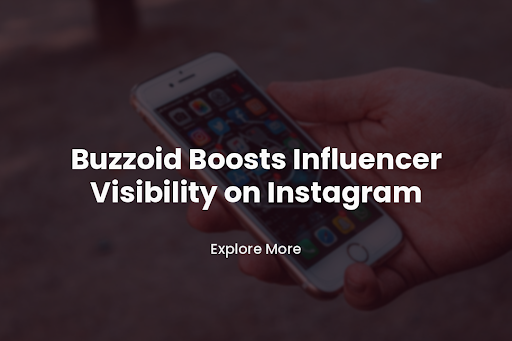The Future of News: From Print to Digital
The evolution of news media from print to digital has transformed how we consume information, shaping the landscape of journalism and communication. This transition has been driven by advancements in technology, changes in consumer behavior, and the increasing demand for instant access to information. In this article, we explore the journey of news from traditional print to the digital age, examining the current trends, challenges, and future prospects of the industry.
The Future of News: From Print to Digital
The Rise of Print Media
Print media has a storied history, dating back to the invention of the printing press in the 15th century. Newspapers and magazines became the primary sources of news, offering in-depth reporting, editorial content, and a sense of credibility. Throughout the 20th century, print media flourished, with newspapers reaching their peak circulation and magazines capturing diverse interests.
Print media played a crucial role in shaping public opinion, reporting on global events, and providing a platform for investigative journalism. The tactile experience of reading a newspaper or magazine, along with the ritual of daily news consumption, established print as a staple in many households.
The Advent of Digital Media
The digital revolution began in the late 20th century, driven by the rise of the internet and personal computing. The 1990s saw the introduction of online news websites, which offered a new way for audiences to access information. Initially, these digital platforms simply replicated print content online, but the real transformation came with the integration of multimedia elements and interactive features.
Digital media introduced several advantages over print, including:
- Instant Access: News could be updated in real time, allowing for immediate reporting on breaking events.
- Global Reach: Digital platforms transcended geographical boundaries, enabling access to news from around the world.
- Interactivity: Readers could engage with content through comments, social media shares, and multimedia elements such as videos and infographics.
As smartphones and tablets became ubiquitous, news consumption increasingly shifted to mobile devices, further accelerating the decline of print media.
The Decline of Print Media
The decline of print media has been marked by a series of challenges:
- Declining Circulation: As digital media gained traction, print circulation numbers began to drop. Many readers preferred the convenience and immediacy of online news.
- Revenue Challenges: Advertising revenue, once a major source of income for print publications, shifted to digital platforms. Print media struggled to adapt to the changing advertising landscape, which favored online and social media ads.
- Environmental Concerns: The environmental impact of print media, including paper consumption and waste, led to increased scrutiny and a push for more sustainable practices.
- Changing Consumer Habits: The rise of digital media changed how people consumed news. The desire for instant updates, personalization, and interactive content led many readers to abandon traditional print formats.
The Digital Transformation of News
The digital transformation of news media has brought about several key changes:
- The Rise of Online News Platforms
Online news platforms have become the dominant source of information. Websites, news apps, and social media have replaced traditional print newspapers as the primary means of accessing news. These platforms offer a wide range of content, including articles, videos, podcasts, and live streams. - The Role of Social Media
Social media has revolutionized news dissemination and consumption. Platforms like Facebook, Twitter, and Instagram allow users to share and discuss news in real time. Social media has also become a source of news for many, with users often discovering breaking news through their networks. - The Emergence of News Aggregators
News aggregators, such as Google News and Apple News, compile articles from various sources, providing users with a personalized news experience. These platforms use algorithms to curate content based on user preferences and reading habits. - The Impact of Data and Analytics
Digital media has enabled news organizations to leverage data and analytics to understand audience behavior and preferences. This data-driven approach allows for more targeted content and advertising, as well as insights into reader engagement.
Challenges Facing Digital News
Despite the advantages of digital news, the industry faces several challenges:
- Misinformation and Fake News
The digital age has seen a rise in misinformation and fake news. The ease of publishing and sharing content online has led to the spread of false information, impacting public perception and trust in news sources. - Revenue Models
Finding sustainable revenue models for digital news has been challenging. Many news organizations have adopted subscription-based models, paywalls, and membership programs to generate revenue. However, monetizing digital content remains a significant hurdle. - Content Overload
The sheer volume of content available online can be overwhelming for readers. Navigating through the noise to find reliable and relevant news can be a challenge, leading to concerns about content quality and credibility. - Privacy and Data Security
Digital news platforms collect extensive data on users, raising concerns about privacy and data security. Ensuring that user information is protected while delivering personalized content is a critical issue for the industry.
The Future of News
The future of news is likely to be shaped by several emerging trends and technologies:
- Artificial Intelligence and Automation
AI and automation are set to play a significant role in the future of news. AI algorithms can assist in content creation, data analysis, and audience engagement. Automated news generation, particularly for data-driven reports, is becoming more common. - Augmented Reality (AR) and Virtual Reality (VR)
AR and VR technologies offer new ways to experience news. Immersive storytelling and interactive experiences can provide readers with a deeper understanding of events and issues. - Personalization and Customization
The demand for personalized news experiences will continue to grow. Advances in AI and machine learning will enable news platforms to deliver content tailored to individual preferences and interests. - Subscription and Membership Models
Subscription and membership models are likely to become more prevalent as news organizations seek sustainable revenue streams. Offering exclusive content, ad-free experiences, and additional benefits will be key to attracting and retaining subscribers.
Newztalkies.com: Shaping the Future of News
As the news landscape continues to evolve, platforms like Newztalkies.com are at the forefront of digital news innovation. Newztalkies.com provides comprehensive coverage of current events, offering a blend of real-time updates, in-depth analysis, and multimedia content. By leveraging the latest technologies and trends, Newztalkies.com enhances the news experience for its readers, ensuring they stay informed about the latest developments in the world.
Conclusion
The transition from print to digital has profoundly impacted the news industry, transforming how we access and consume information. While print media played a crucial role in shaping public opinion for centuries, digital platforms have ushered in a new era of instant, interactive, and personalized news experiences.
The future of news will be defined by advancements in technology, evolving consumer preferences, and the industry’s ability to adapt to new challenges. As we move forward, news organizations will need to navigate issues related to misinformation, revenue models, and data security while embracing innovations that enhance the news experience.
In this rapidly changing landscape, platforms like Newztalkies.com exemplify the potential of digital news to deliver timely, accurate, and engaging content. By staying abreast of technological advancements and evolving audience needs, the future of news promises to be both dynamic and transformative.






